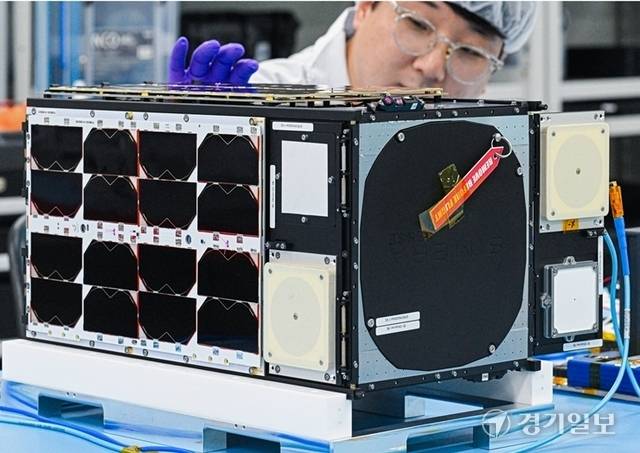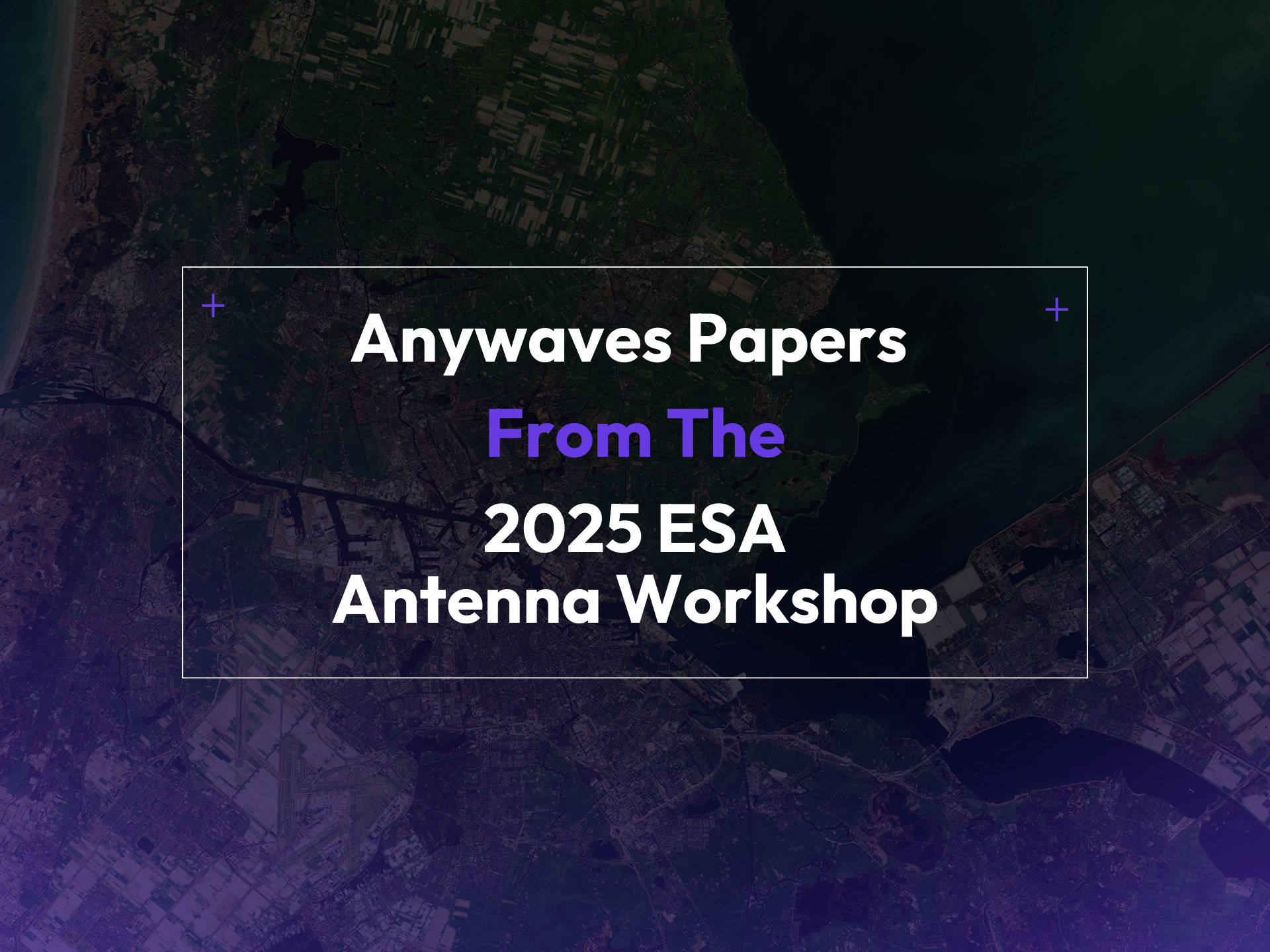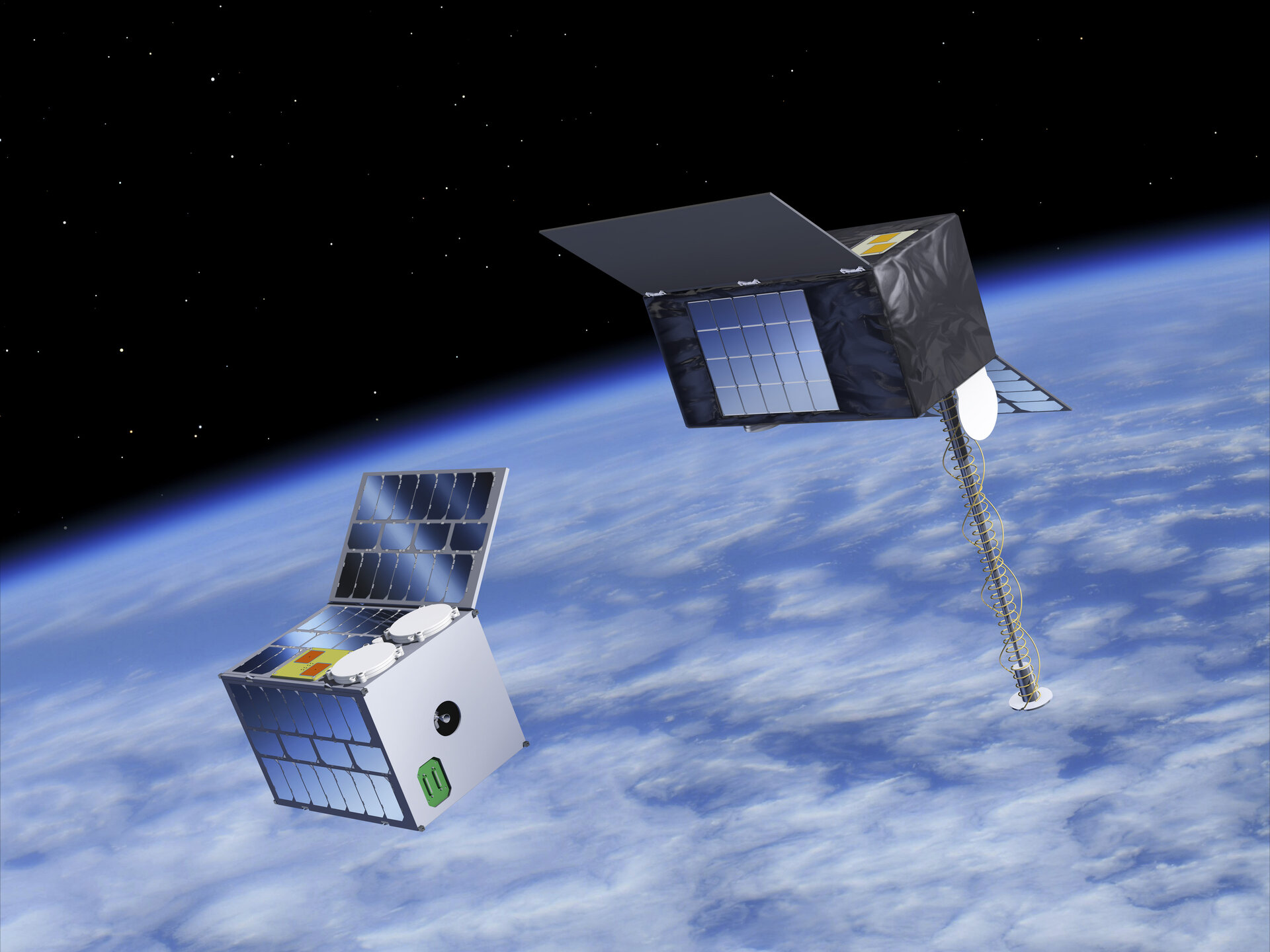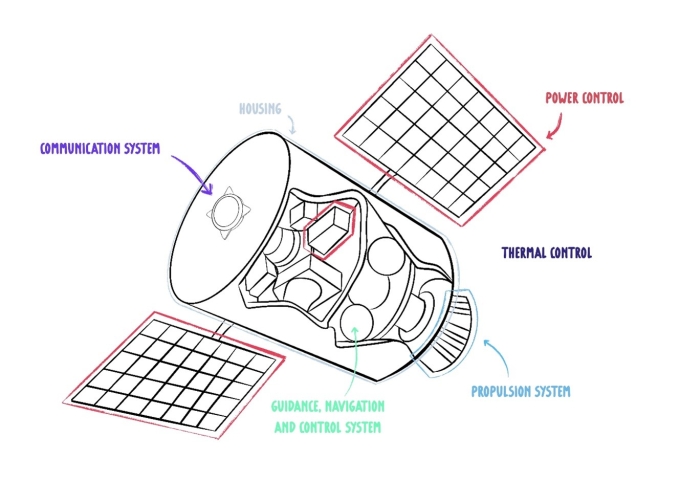Other news

Case Study - GYEONGGISat-1: Enabling Climate Intelligence From Space
Read more
2025 ESA Antenna Workshop: Ka-Band TT&C and X-Band Active Antenna Breakthroughs
Read more
Thousands of satellites orbit above us, yet we often know little about their composition or how they function. A satellite is an object that orbits a celestial body, such as a planet or a star. There are natural satellites, such as the Moon and some asteroids, and artificial satellites, which are human-made objects intentionally placed in orbit around celestial bodies (like Earth). In this article, we will focus on these artificial satellites.
There are various types of artificial satellites, each designed for specific missions: Earth observation, navigation, space exploration, scientific research, telecommunications, defense, and space logistics. Depending on their mission, these satellites are placed in different orbits: low Earth orbit (LEO) up to 2,000 km in altitude, medium Earth orbit (MEO) between 2,000 km and 20,000 km, geostationary orbit (GEO), and so on.
However, despite having specialized payloads, satellites share a common basic structure consisting of three main elements: the payload, the bus, and the subsystems that make up the bus. Let’s explore this common structure to better understand what a satellite is made of.
Despite the diversity in satellite missions—from Earth observation to deep space exploration—most satellites share a common structural framework comprising two primary sections:

The structural frame provides the necessary support for all satellite components. The platform is designed to withstand the mechanical stresses experienced during powered flight, including liftoff and acceleration (up to 4-5G), noise (decibels), and temperature differences. This requires materials with low thermal expansion, such as carbon composites. It needs to be strong and stiff to survive the launch but also as light as possible to reduce launch costs. The housing is constructed from robust materials capable of withstanding the harsh space environment. These materials should have good stiffness and strength properties relative to their weight, such as aluminum or carbon-fiber-reinforced polymers.
A satellite’s power system is its lifeline, supplying energy to all onboard systems and the payload. Satellites primarily generate energy using solar panels oriented towards the sun. During eclipse periods, when they are in Earth’s shadow, they rely on rechargeable batteries that have been previously charged by the solar panels. The power control system monitors and regulates the battery charge and voltage.
The propulsion system is responsible for adjusting the satellite’s orbit and orientation using various propulsion technologies. Different methods include cold gas propulsion, chemical propulsion, and electric propulsion. All work on the same principle: thrust is generated by accelerating mass through a nozzle.
Satellites are exposed to extreme temperatures. Parts of the payload must be kept within narrow temperature ranges to function properly, and batteries or electrical components that experience temperatures beyond their limits are at risk of failure. Thermostat-controlled electric heaters activate at low temperatures to prevent certain components from getting too cold. Additionally, the attitude control system can aid thermal control by adjusting the orientation of radiators and other surfaces.
These systems manage satellite operations, including navigation, communication, and data processing. They centralize command processing through the Command and Data Handling (C&DH) system, executing instructions received from ground control and distributing them to the appropriate subsystems. These systems continuously monitor the health and status of all onboard components—such as power levels, temperatures, and functionality—ensuring optimal performance.
They also handle data processing by collecting, processing, and storing information from the payload before transmitting it back to Earth.
Additionally, they are responsible for fault detection and correction, identifying anomalies in system operations and initiating corrective actions or switching to redundant systems when necessary.
The Guidance, Navigation, and Control (GNC) system is critical for the satellite’s ability to position and orient itself accurately in space. The Attitude and Orbit Control System (AOCS) adjusts the satellite’s orientation using sensors (star trackers, sun sensors, inertial measurement units) and actuators (reaction wheels, magnetorquers). Gyroscopes in the inertial measurement unit continuously measure changes in orientation. Reaction wheels control the satellite’s orientation around its three axes by generating rotations opposite to the center of mass.
The communication system on a satellite is a comprehensive suite that enables all forms of data exchange between the satellite and ground stations. It encompasses both the reception (uplink) and transmission (downlink) of mission-specific data and the critical functions of Telemetry, Tracking, and Command (TT&C).
The payload is the heart of the satellite, containing all mission-specific instruments and equipment.
In a nutshell, it’s everything used to carry out the satellite’s mission. Each payload is specific to the satellite’s mission. For example, the Sentinel-1A satellite launched by the ESA carries a radar payload to monitor the planet, including observing changes in the Arctic ice sheet.
The composition of satellites is a complex integration of various systems and materials that come together to perform specific missions in the harsh environment of space. Despite the diversity in their functions, satellites share a common basic structure consisting of the payload, the bus, and the subsystems that make up the bus. As applications evolve and satellite sizes shrink, especially with the rise of miniaturized satellites like CubeSats, their design and materials continually adapt. Each advancement must meet the stringent demands of the space environment, including extreme temperatures, vacuum conditions, and radiation.
Understanding the fundamental structure of satellites—the bus, the payload, and the various subsystems—provides valuable insight into how these technological marvels function. By dissecting each component, from the structural frame to the communication systems, we gain a clearer picture of what a satellite is made of and the considerations involved in its design and operation.
In a forthcoming article, we will delve deeper into space-grade materials and manufacturing techniques such as 3D printing, which are transforming satellite construction. We will also explore the challenges and innovations in satellite design, including miniaturization and space debris management, that are critical for the future of space exploration and utilization.
In the meantime, if you’re looking for a reliable partner to supply the communication system for your satellite, Anywaves is ready to help craft the best antenna solution tailored to your mission needs.



If you have any question, we would be happy to help you out.